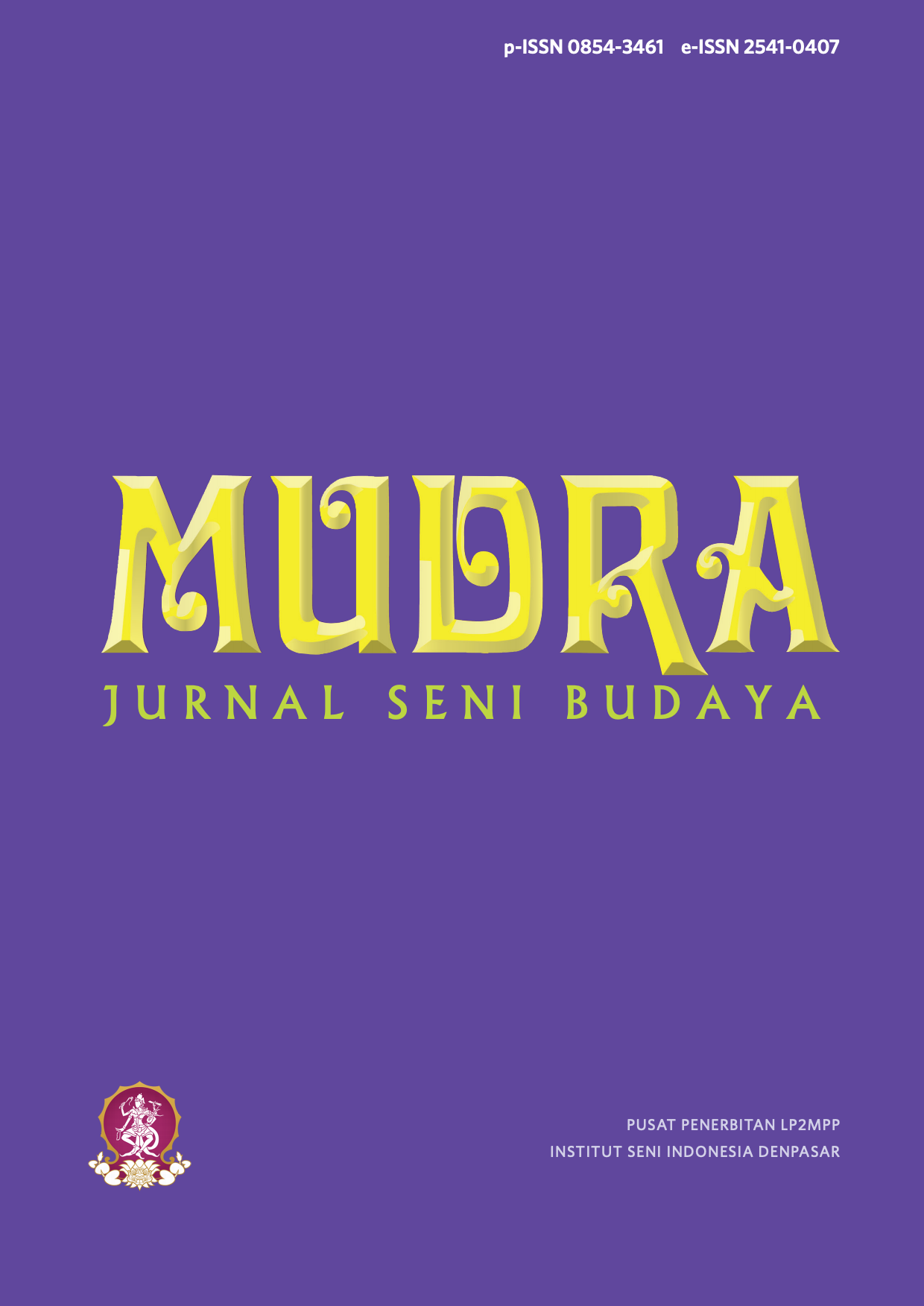Bentuk-bentuk Petulangan Dalam Upacara Ngaben Ditinjau Dari Sudut Kesenirupaan Di Bali
DOI:
https://doi.org/10.31091/mudra.v22i1.1543Keywords:
Sarcophagus, Cremation, CeremonyAbstract
The Art of sarcophagus has been known in Bali since ancient up to now in relationship with a cremation ceremony called “ Ngaben” or “ Pelebon”. Its function is as a plase for the dead body during cremation in order that the dead body is protected and its ash can be easily collected after the cremation Phylosophically, sarco- phagi whith are shape of animals have. a meaning of a pach into the heaven for the soul of the cremated body. Besides, if we view them from the art aspect, they hava special artistic velues and special beauty which become an important cultural asset to attract tourist who want to watch them. Ornaments of the sarcophagi generally used in Bali, are taken from animals such as lion, deer, akin of dragon, gedarba, tiger, and kinds of fish. The shaped sarcophagi are adorned with carved ornaments or with cutouts which are stuck on them and made from paper with various carving motif and coloured-catton thread for example: takep pala, takep piah, pengampad, badong, bottems cover ornament, fire tongue, “ gunala”, “karang guak”, “dure “. Ornaments carved in va- rious motif such as “patra punggel”, “patra sari”, mas-masan, “cra- cap”, patra cina “ and other “ kekarangan “. Comparison elements have important role on the beauty of sarcophagus work such as the comparison between the height and the length of the sarcophagus. Sarcophagi not only have special religious meaning, but olso they have high artistic value which should be developed in the future.
Downloads
References
_______. 1978. Parisada Hindu Dharma, Upadesa, Tentang ajaran Agama Hindu. Sunjoyo, Drs. 1976. Diktat Kuliah Tinjauan Seni. FT Arsitektur Institut Teknologi 10 Nopember Surabaya
_______. Lontar Denpasar, Koleksi Mangku Jero Kuta, Sesetan Denpasar. _______. Babad Pasek, Koleksi Ida Pedanda Manuaba, Griya Anyar Padangtegal, Ubud.
_______. Babad Dalem Katiagan, Koleksi I Ketut Rinda, Br. Tengah Blahbatuh, Gianyar.
Covarrubias, Maguel.1972, Island Of Bali, Oxford University Press.
Goris, Dr. R., Bali Atlas Kebudayaan, Cults and Customs, Diterbitkan oleh Pemerintah Republik Indonesia.
Herbert Read, Pengantar Seni, bagian pertama dan kedua diterjemahkan oleh Soedarso SP.MA Dosen ASRI Yogyakarta.
Kadir, Abdul MA. Pengantar Aesthetica. Sekolah Tinggi Seni Rupa Indonesia ASRI Yogyakarta.
Van Der Hoop, An. J. Th. A. Th.,1949, Ragam-ragam Perhiasan Indonesia. Uitgegeven door het Koninklijk Bataviasch Genootschap van Kunsten en Wetenschappen.
Zimmer Henrich, Myths and Symbols in Indian Art and Civilization, Edited by Joseph Cambeel.
Downloads
Published
How to Cite
Issue
Section
License
Copyright (c) 2008 Author(s)

This work is licensed under a Creative Commons Attribution-NonCommercial-ShareAlike 4.0 International License.
- Copyright on any open access article in a journal published by Mudra Jurnal Seni Budaya is retained by the author(s).
-
The Creative Commons Attribution License 4.0 formalizes these and other terms and conditions of publishing articles.






